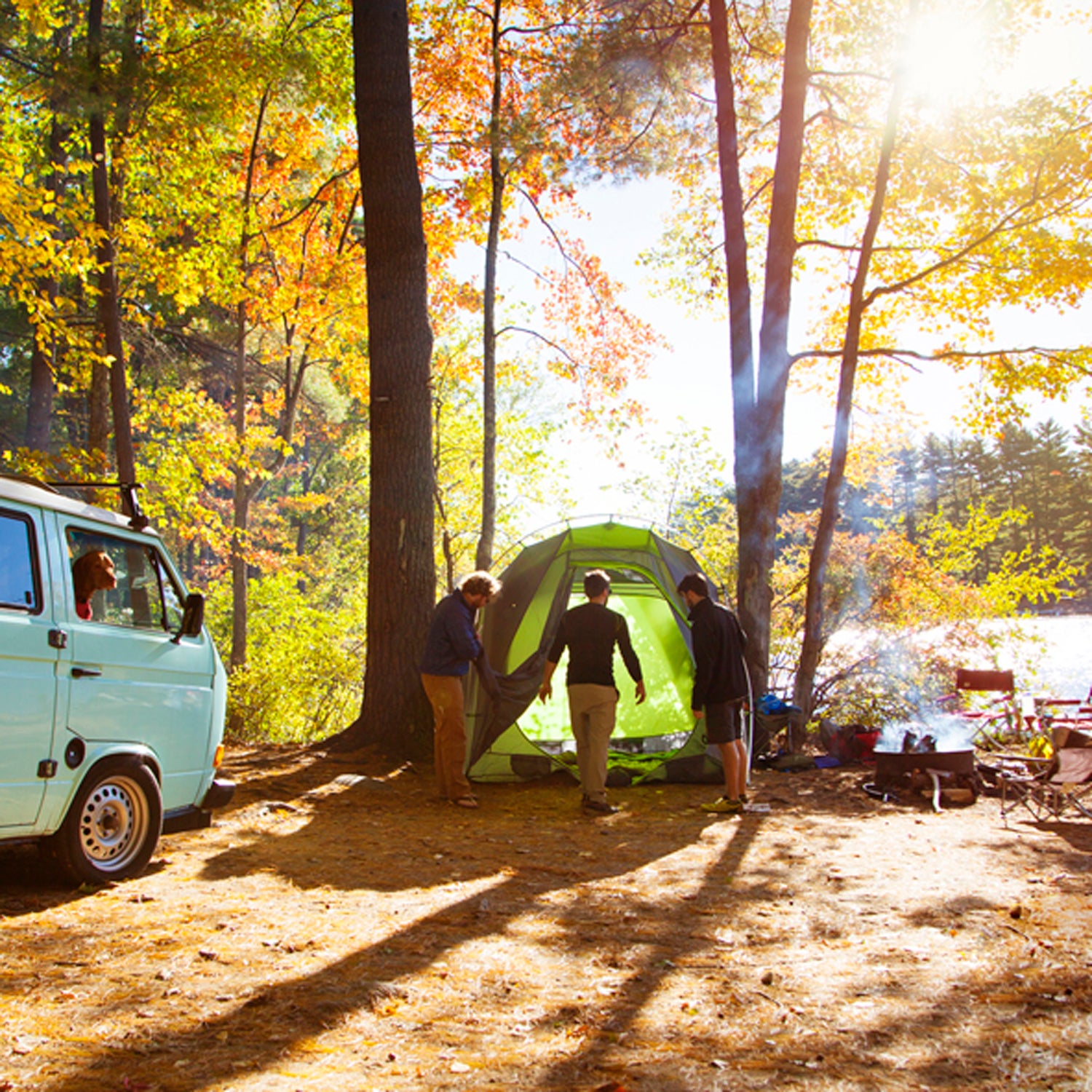Cam Bresinger, 40, was a senior industrial design student at the Rhode Island School of Design when he founded back in 2002. Since then, the brand has grown into one of the most well-respected outdoor gear manufacturers in the country, with multiple Nemo products making the pages of ���ϳԹ���’s biannual Buyer’s Guides. Bresinger camps more than 30 nights a year, mostly with his wife and two young children. Here are his six tips to finding the perfect site.
#1. Find a Legal Spot
Choose an area where you can come and go without leaving a trace. Most Forest Service areas have designated camping spots. Buy a map at the ranger station or your local gear store to find them. If there are designated spots, use them—they’ve been chosen to concentrate the environmental impact. If you’re camping in a wilderness area, pick a spot that’s bare of vegetation, out of site from the trail, and at least 100 feet from a water source.
#2. Safety First
This summer, my family was going camping along the . The night before, the river swelled and flooded the entire campsite. People had to abandon their camps in the middle of the night—many left without even packing up camp. We arrived the next day and found a bunch of wet, unhappy campers. The lesson: Prepare for the worst. It’s unlikely that a river will flood, but it could, so camp on the high ground instead of the riverbank. Similarly, don’t camp under dead trees that could fall at any time, and if you’re on the beach, check the tide chart to see how far the tide will come in at night.
#3. Look for Level Ground
This is the hardest thing to reconcile with a tent. There’s nothing worse than spending all night rolling off your sleeping pad because the ground is too slanted. Look for the flattest area, and fill in any low spots with clothes and empty stuffsacks.
#4. Stay Close to Water (But Not Too Close)
I love falling asleep to the white noise of a babbling brook. It can also cover other camp sounds, like your neighbor’s noisy generator. I always recommend jumping into cold water before bed on a hot night; it helps your body reset after a day of hiking. Just make sure you stay at least 100 feet away from a water source, and always wash your dishes away from a stream. Seriously, a Forest Service ranger can fine you for camping too close to water.
#5. Focus on Fun
Try to avoid driving to an activity the next morning. Instead, find a campsite close enough that you can eat a casual breakfast, throw on your hiking boots, and head toward a waterfall or summit.
#6. Make It Homey
Too many people try to be minimalist when they’re camping and just don’t have as much fun as they could. When my family camps, we have a contest to see how comfortable we can be. Bring camp chairs for around the fire, a tablecloth for the picnic table, and colorful lights to string up around camp. One of my favorite tips: Bring a mat to put in the doorway of the tent and a large camping blanket to lay on the inside of the tent. Take your shoes off on the mat; when you go inside, the blanket acts as wall-to-wall carpet.


